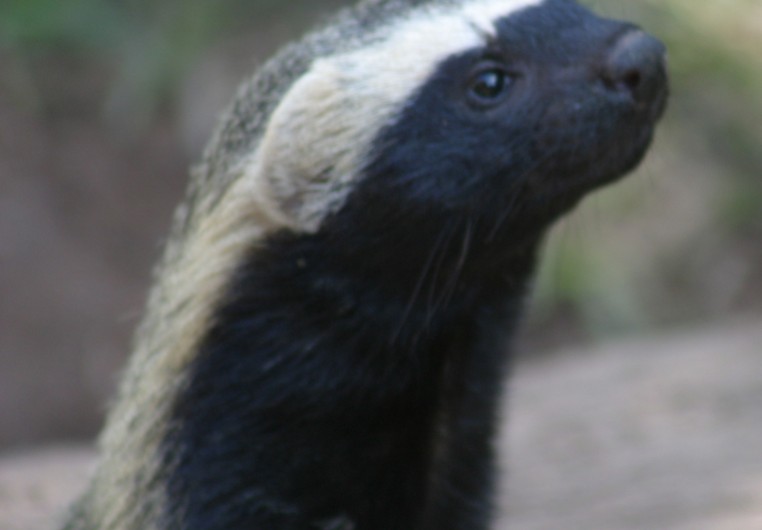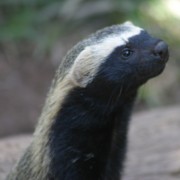Biodiversity
 Ferret
Galictis vittata | Schreber, 1776
Ferret
Galictis vittata | Schreber, 1776

Characteristics: Species that is very similar to Galictis cuja, although slightly larger, about 55cm in length, and with a tail measuring 20cm. It has an elongated body and lower legs, with a black neck, abdomen, face and limbs, separated from the gray back by a white stripe stretching from its forehead to its shoulders.
Distribution: From Southern Mexico to Northern Brazil, including Peru and Bolivia.
Habitat: Areas modified by man, savanna fields, savanna woodland, savanna, forests, palm tree groves, and areas with secondary vegetation.
Habits: Crepuscular and nocturnal species sighted in groups of 3 or 4 individuals. The ferret is extremely agile and fast, and often takes shelter in abandoned burrows, foraging mainly on the ground.
Diet: Essentially carnivorous, feeding on small mammals, birds and their eggs, reptiles, amphibians, and insects, but may sometimes eat fruit.
Breeding: The gestation period is 3 months, and 2-4 pups are born.
In the UFRA area: During the survey campaigns, the ferret was only found in wetlands with herbaceous plants, with a very restricted spatial distribution. It was identified only once and can be considered as rare in the farm areas.





